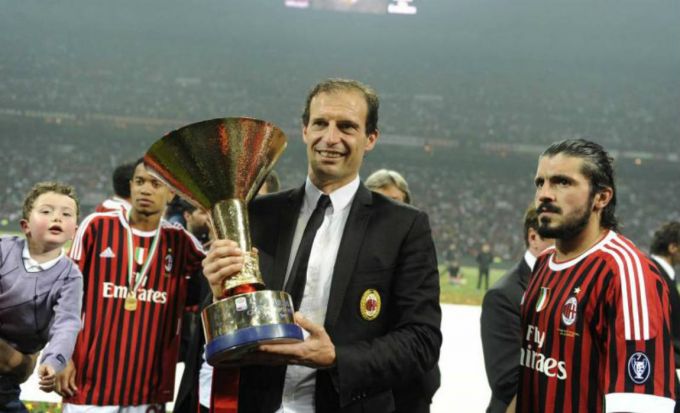A seismic shift has occurred at the iconic San Siro. AC Milan, a club steeped in history and often synonymous with attacking flair, is embarking on a new chapter, one meticulously crafted by the returning tactician Massimiliano Allegri. The expectation is clear: less emphasis on pure spectacle, more on an unwavering, almost stoic, pursuit of results. This transformation is not merely philosophical; it is embodied by a quintet of players who are proving pivotal to Allegri`s vision of `concrete football.`
Allegri`s Blueprint: Precision Over Panache
The return of Massimiliano Allegri to the AC Milan dugout signals a definitive change in direction. His previous tenure brought success, built on a foundation of tactical discipline and efficiency. Now, after a period under coach Fonseca that, while showing flashes of brilliance – including an impressive victory in Madrid and the emergence of talents like Reijnders – often lacked the sustained solidity required for consistent contention, Allegri is tasked with instilling a renewed sense of purpose. His philosophy prioritizes defensive robustness, calculated progression, and clinical execution. It’s a pragmatic approach, perhaps not always aesthetically pleasing, but undeniably effective. The current team, fresh from a less-than-stellar early season outing against Parma a year prior, now exhibits a nascent but palpable solidity.

Massimiliano Allegri on the touchline, orchestrating AC Milan`s new tactical approach.
The Quintet of Catalysts: Shaping Milan`s New Identity
Within this evolving structure, five players have emerged as central figures, each contributing uniquely to the fabric of Allegri`s Milan.
Ruben Loftus-Cheek: The Midfield Engine Reinvented
Ruben Loftus-Cheek`s presence in the midfield is more pronounced than ever. Under Allegri, his considerable physical attributes are being harnessed for both defensive resilience and incisive attacking contributions. He is no longer just a box-to-box midfielder; he is becoming a tactical fulcrum, using his power to break up opposition play and drive the team forward with controlled bursts. His role is less about individual artistry and more about disciplined, high-impact interventions, fitting perfectly into the `concrete` mold.
Matteo Gabbia: The Quiet Defender`s Ascent
From promising academy product to a key figure, Matteo Gabbia`s development has been steady. In Allegri’s system, where defensive integrity is paramount, Gabbia`s reliability and tactical awareness are proving invaluable. He provides a calm presence at the back, demonstrating an improved ability to read the game and execute precise clearances. His understated yet crucial contributions underpin the team`s newfound defensive solidity, a testament to Allegri`s belief in homegrown talent.
Luka Modric: The Ageless Maestro`s Unexpected Encore
Perhaps the most intriguing inclusion in this quintet is Luka Modric. At an age when many contemplate retirement, the Croatian maestro continues to defy the conventional timeline of professional football. His reported presence at Milan in 2025 suggests a strategic acquisition by Allegri: an unparalleled footballing mind to dictate tempo, provide intricate passing, and offer invaluable experience in crucial moments. Modric`s legendary vision, even if delivered at a slightly more measured pace, would be the elegant, precise gears turning within Allegri`s robust machine. It`s a delightful irony – a player renowned for exquisite, almost artistic, control, now deployed to enhance `concrete` football.
Alexis Saelemaekers: The Versatile Workhorse
Alexis Saelemaekers might not always grab headlines, but his tactical versatility and relentless work rate are precisely what Allegri values. Capable of operating across various attacking and midfield roles, Saelemaekers offers tactical flexibility, diligently tracking back and pressing, while also providing width and support in attack. He is the quintessential utility player for a pragmatic coach, a reliable cog in a system that demands commitment from every individual.
Christopher Nkunku: The Clinical Edge of Efficiency
Christopher Nkunku`s arrival, as implied by the narrative, suggests AC Milan has acquired a potent, intelligent attacker. In Allegri`s `concrete` framework, Nkunku would likely be tasked with maximizing goal-scoring opportunities with efficiency and precision. His ability to find space, his sharp finishing, and his intelligent movement are ideal for a team that might generate fewer outright chances but seeks to convert a higher percentage of them. Nkunku represents the sharp end of Allegri`s tactical spear, ensuring that the team`s careful build-up translates into decisive action.
Beyond the Names: A Cultural Re-alignment
The synergy between these five players and Allegri’s overarching philosophy extends beyond individual performance. It speaks to a cultural re-alignment at AC Milan. The emphasis is no longer solely on dazzling opposition with individual brilliance, but on a collective, disciplined approach that grinds out results. This isn`t to say creativity is stifled, but rather, it`s channeled towards efficiency. It`s a pragmatic evolution, reflecting a coach`s determination to forge a resilient, unyielding team capable of competing at the highest levels consistently.
As the 2025/2026 season unfolds, all eyes will be on San Siro to witness the full impact of this transformation. AC Milan under Massimiliano Allegri, buttressed by the contributions of Loftus-Cheek, Gabbia, Modric, Saelemaekers, and Nkunku, is not just building a team; they are forging a new identity. Whether this `concrete` approach will lead to silverware remains to be seen, but one thing is certain: the Rossoneri are no longer simply playing football; they are demonstrating a masterclass in tactical evolution.

